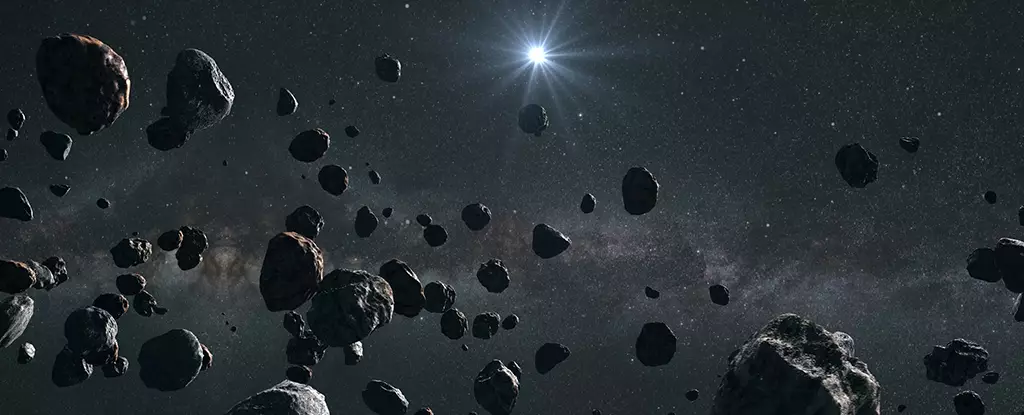A recent breakthrough in scanning telescope images has revealed surprising evidence about the extent of our Solar System’s disc of material. Previous observations led astronomers to believe that the Kuiper Belt, a field of icy boulders, thins out at 48 times the distance between Earth and the Sun. However, a team of astronomers has discovered that our Solar System’s disc extends much farther into interstellar space than previously thought. This newfound understanding challenges the perception that our Solar System is smaller than those surrounding comparable stars.
The primary objective of the research team, led by Canada’s Herzberg Astronomy and Astrophysics Research Centre, was to identify potential targets for the New Horizons Probe as it ventured into the outer reaches of the Solar System. The mission had already provided us with remarkable close-up images of Pluto before proceeding at an impressive speed of nearly 60,000 kilometers per hour. However, finding suitable objects for further investigation beyond 60 AU from the Sun presented a significant challenge.
To overcome the limitations imposed by the darkness of the Solar System’s edge, astronomers employ a technique known as shift-stacking. Since very little light reaches this region, objects are scarcely visible in individual telescope images. By capturing pictures at different times and combining them, astronomers can enhance the visibility of these dimly lit objects. However, this method relies on knowing the target’s path.
To expedite the process and reduce the manual effort required, the research team utilized machine learning. They trained a neural network using fabricated objects inserted into telescope imagery. Once trained, the neural network was unleashed on data captured by the Subaru Telescope in Hawaii between 2020 and 2021. The results were astonishing—twice as many Kuiper Belt Objects were identified by the machine learning technique compared to a human search of the 2020 data. This suggests an increased density of material at a distance of approximately 60 to 80 AU along the trajectory of the New Horizons Probe.
The findings of this study may shed light on an unusual glow detected by both the New Horizons Probe and the Hubble Space Telescope. The additional debris in the outer Solar System could contribute its own reflective dust, causing this anomalous phenomenon. However, it is important to consider whether these results are due to mere chance or if there is something unique about the Solar System along the path of the New Horizons Probe. Furthermore, the machine learning technique employed may have some inherent flaws that need to be addressed.
It is crucial to note that the study’s results have not yet undergone peer review and subsequent confirmation by future ground- and space-based surveys. Despite this, if the findings are accurate, it implies that our Solar System possesses two distinct rings of icy material separated by a gap at approximately 50 AU. One of these rings is the well-known Kuiper Belt, while the other encompasses a wide region of icy boulders extending as far from Pluto as Pluto is from Earth. The existence of this gap poses an intriguing mystery that warrants further exploration.
This groundbreaking discovery challenges previous assumptions about the size and composition of our Solar System’s disc of material. By employing machine learning and innovative techniques like shift-stacking, astronomers have managed to uncover evidence that extends our understanding of the Solar System’s outer reaches. While more research and validation are required, this study paves the way for future investigations into the mysteries that lie beyond Pluto. The presentation of these findings at the 54th Lunar and Planetary Science Conference in 2023 showcases the significance of this discovery in expanding our knowledge of the cosmos.


Leave a Reply